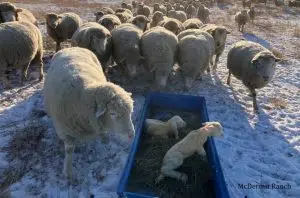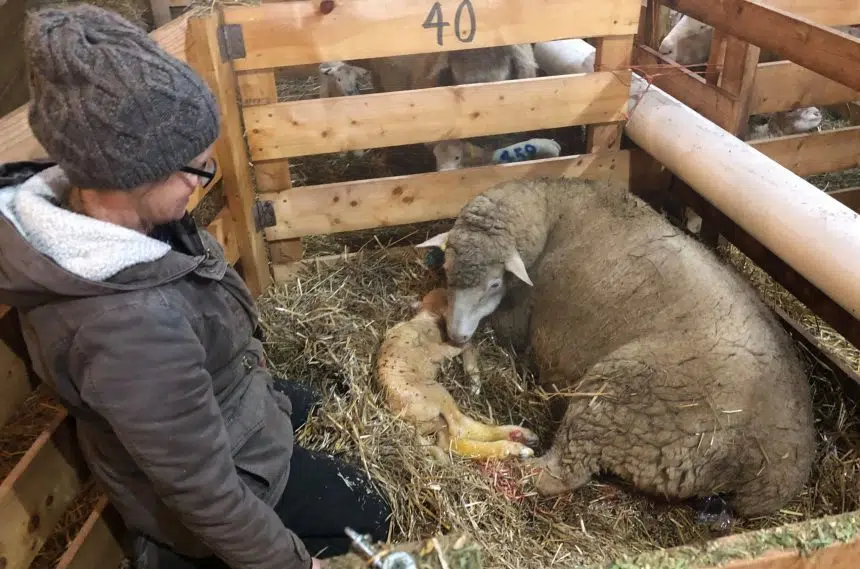There’s no concern about staying warm during the extreme cold spell at the McDermit Ranch near Southey.
It’s getting a little steamy in the barn during lambing season.
Sheep breeder Jelaine McDermit is near the tail end of lambing 180 ewes, a process which started on Boxing Day.
While it was around -30 C with a wind chill near minus -40 on Tuesday, her insulated but non-heated sheep barn was sitting around two degrees. It was kept warm only by the body heat of all the sheep.
“If you are lambing in this time of year and you don’t have some sort of insulated, warm place for them to be born in and you’re not there when they are born, they chill down very quickly because they’re wet and small. Even -10, they can soon become hypothermic so it’s good to have a good facility if you’re going to lamb in the winter,” said McDermit.
McDermit has been breeding sheep with her husband for 34 years but they’ve only been at their current ranch near Southey for three years.
She said they have lost lambs in the past after a ewe gave birth outside in the cold. This season, on a relatively warm day after Christmas, they were still feeding the ewes outside in the field when one lambed. It happened a fair distance away from the barn so McDermit brought the lambs in on a toboggan.

A toboggan is used to carry lambs back to the barn after being born in the field at McDermit Ranch on Dec. 28, 2019. (McDermit Ranch/Facebook)
When a ewe is about to give birth, McDermit said she will go off into a corner, not eat, circle, nest and then get vocal. Depending on the ewe and the size of the lamb, it can take from one hour to three or four to deliver.
First on the schedule for a newborn lamb is a bath.
“They’re slimy and warm,” said McDermit.
After washing the birthing fluid off the newborn in a bucket of water, McDermit put it aside to dry off. Then she picked up a similar sized, four-day-old lamb that was among other triplets and started the fostering process with the first lamb’s mother. It gets a little crowded when one ewe raises triplets, so McDermit takes one and pairs it with the ewe that only had one baby.
I was at McDermit Ranch near Southey today staying warm in the barn, learning about lambing. This is Jelaine washing a lamb just minutes after it was born. Listen to 980 CJME for the story. #saskag pic.twitter.com/Oy1mO4s3LW
— Andrew Shepherd (@Andrew5hepherd) January 15, 2020
“I’m tricking the mom into thinking that the foster lamb is hers,” said McDermit.
She washed the foster lamb in the same bucket of water used to wash the mother’s biological lamb and returned both lambs to the pen, about 15 minutes apart.
“I’d rather have sheep raise the lambs than me raise them with milk replacer,” said McDermit.
McDermit explained some breeders will stick their hands inside the ewe after giving birth to trick it into thinking it had two babies. Using this washing method instead has proven just as successful for McDermit.
After lambing the remaining 25 ewes, there will be another period of lambing in March for 80 more. McDermit will use the best sheep for breeding while the ones that don’t make the cut, will end up going to market.











